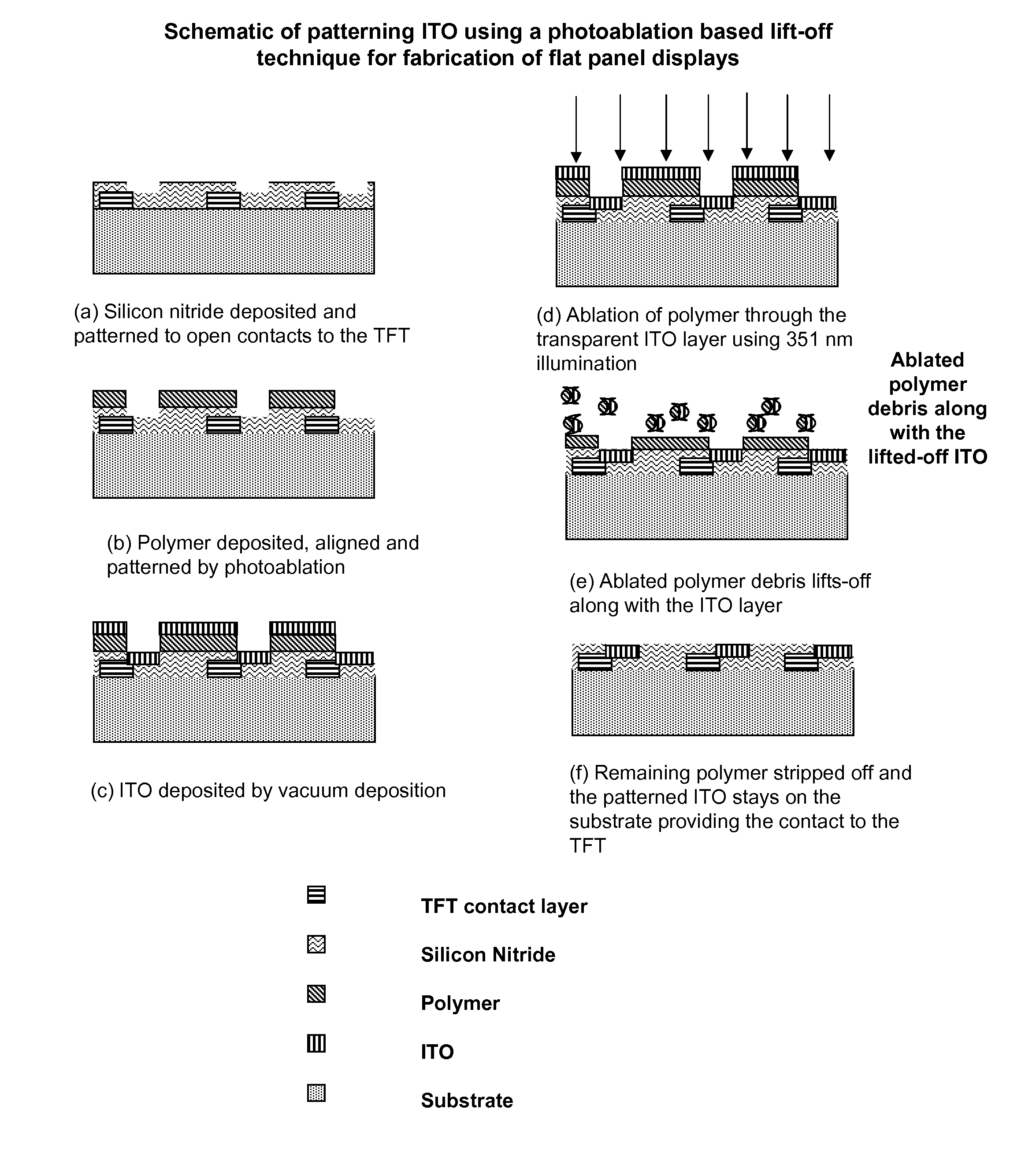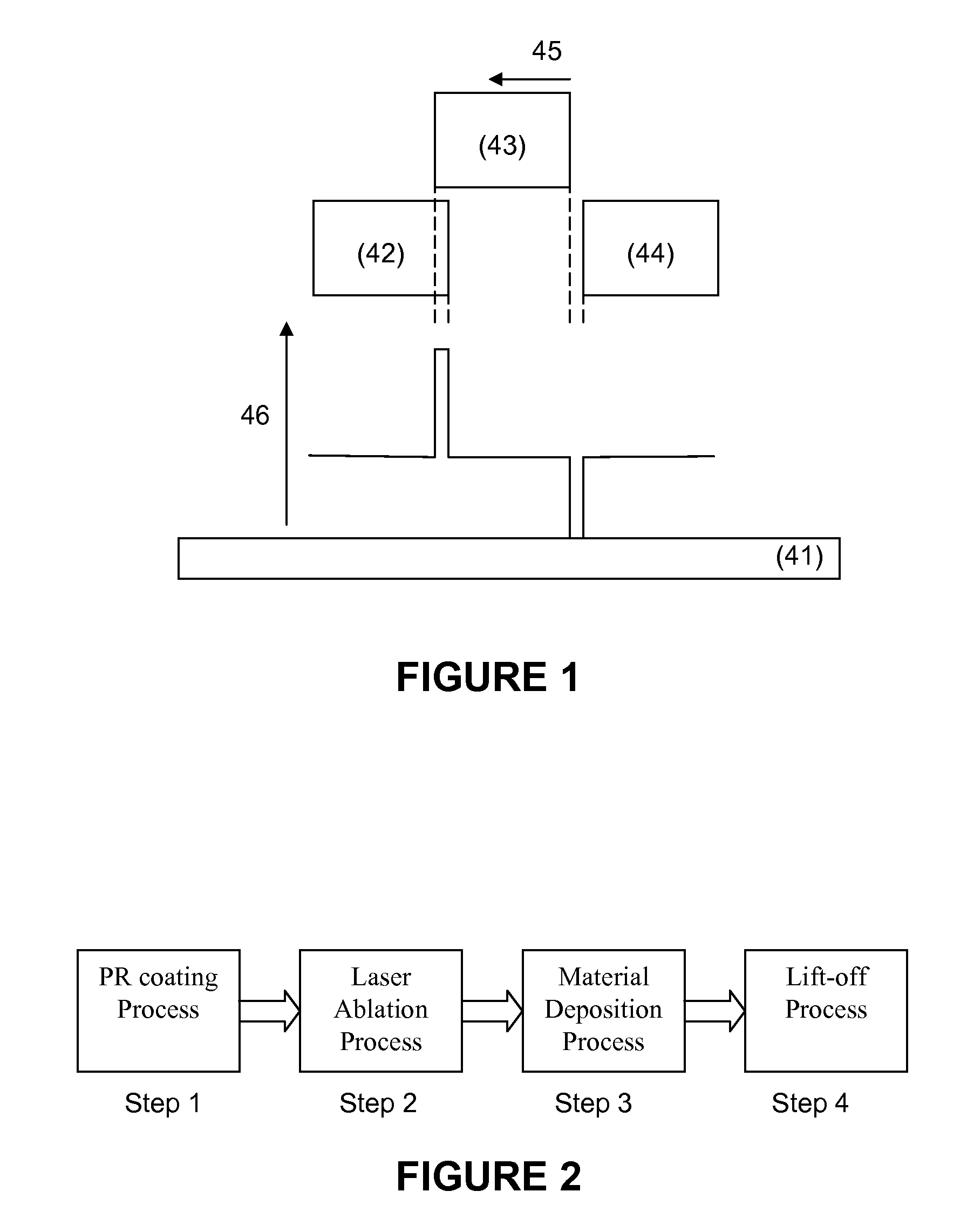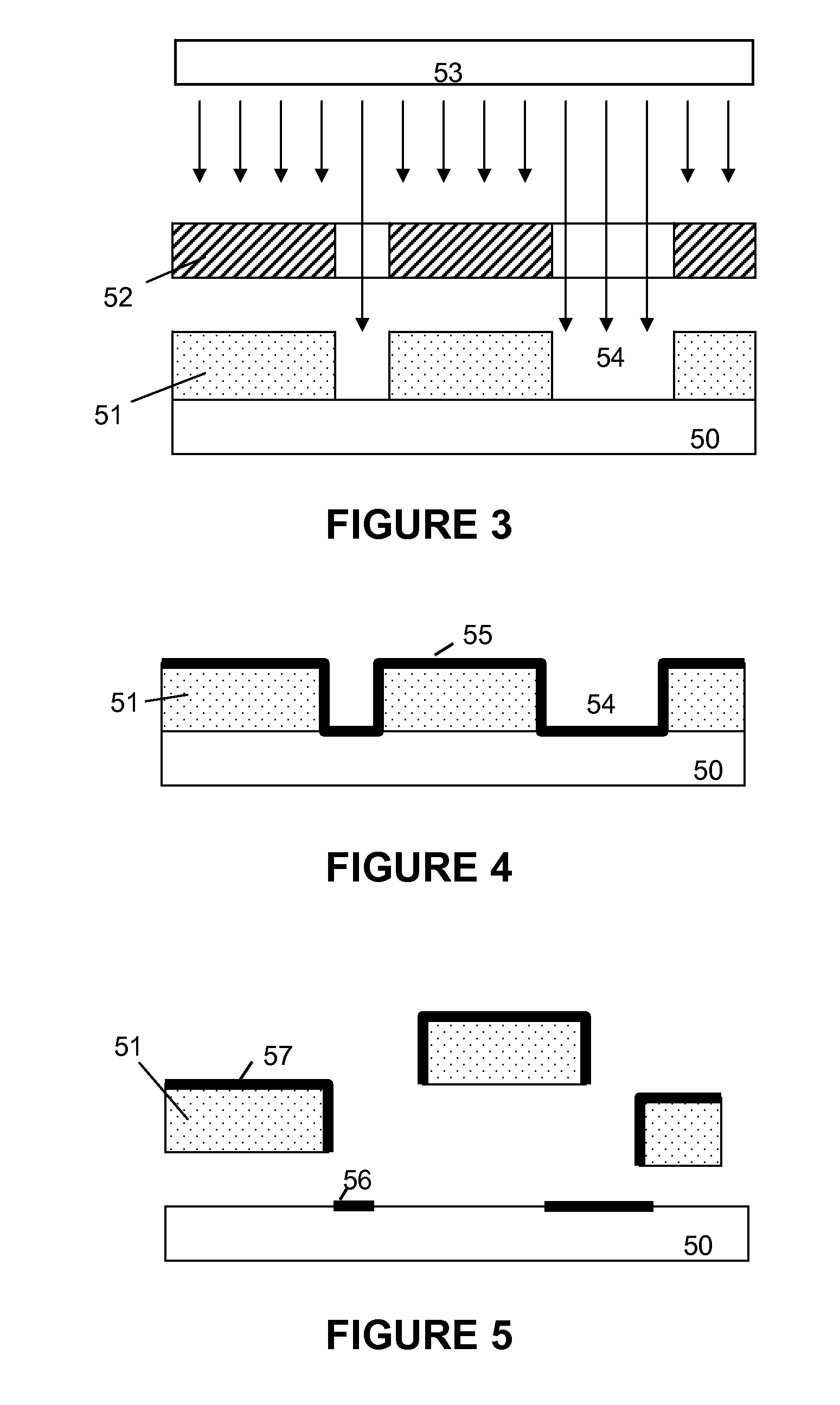High throughput, low cost dual-mode patterning method for large area substrates
a dual-mode patterning and large-area substrate technology, applied in the field of high throughput, low cost dual-mode patterning method for large-area substrates, can solve the problems of affecting the commercial implementation of contact printing methods for applications requiring high-resolution patterning, affecting the pattern fidelity and resolution of the patterning achieved using this photolithographic technique, and affecting the quality of the finished product. , to achieve the effect of reducing the complexity of costly and time-consuming photolithographi
- Summary
- Abstract
- Description
- Claims
- Application Information
AI Technical Summary
Benefits of technology
Problems solved by technology
Method used
Image
Examples
example 1
ITO Thin Film Patterning for The Fabrication Of Thin Film Transistor-Liquid Crystal Display Systems
[0084]It is a goal of the present invention to provide a high throughput and low cost patterning platform for making large area microelectronic display devices. The present example provides processing steps and materials strategies for making an important class of flat panel display devices comprising thin film transistor—liquid crystal display systems.
1.a. Basic Principle of Flat Panel Display Devices
[0085]The images in flat panel displays (FPD) are composed of millions or more, colored dots controlled by outer devices. These dots are called pixels and each pixel is the basic unit for image generation. The pixels in the FPD emit controlled-colored-light to the designated directions. A pixel can make various colors by generating light by itself, or by controlling the amount of light that is generated by the attached light source. For generating images in FPD, each pixel should be contr...
example 2
Fabrication of AlNd Pattern in TFT-LCD Panel
[0104]As is shown in FIG. 16, the gate metal 70 is deposited on the glass substrate 76 to fabricate TFT structures. AlNd (Nd<5%) is commonly used material for this purpose. The conventional pattering method for AlNd is photolithography and wet etching method. The laser ablation of AlNd is known to be very hard due to material characteristics. However, the present invention can be applied to patterning of AlNd layer to achieve cost effective and high resolution patterning. In these methods, patterned laser ablation of a deposited polymer is used to generate a deposition mask, similar to the processing described in the context of ITO patterning. The present methods do not require direct laser ablation patterning of AlNd. As will be apparent to one of ordinary skill in the art, other materials can be patterned by the present methods, thereby eliminating the need for conventional photolithography and etching processing steps.
PUM
| Property | Measurement | Unit |
|---|---|---|
| distance | aaaaa | aaaaa |
| thicknesses | aaaaa | aaaaa |
| wavelengths | aaaaa | aaaaa |
Abstract
Description
Claims
Application Information
 Login to View More
Login to View More - R&D
- Intellectual Property
- Life Sciences
- Materials
- Tech Scout
- Unparalleled Data Quality
- Higher Quality Content
- 60% Fewer Hallucinations
Browse by: Latest US Patents, China's latest patents, Technical Efficacy Thesaurus, Application Domain, Technology Topic, Popular Technical Reports.
© 2025 PatSnap. All rights reserved.Legal|Privacy policy|Modern Slavery Act Transparency Statement|Sitemap|About US| Contact US: help@patsnap.com



